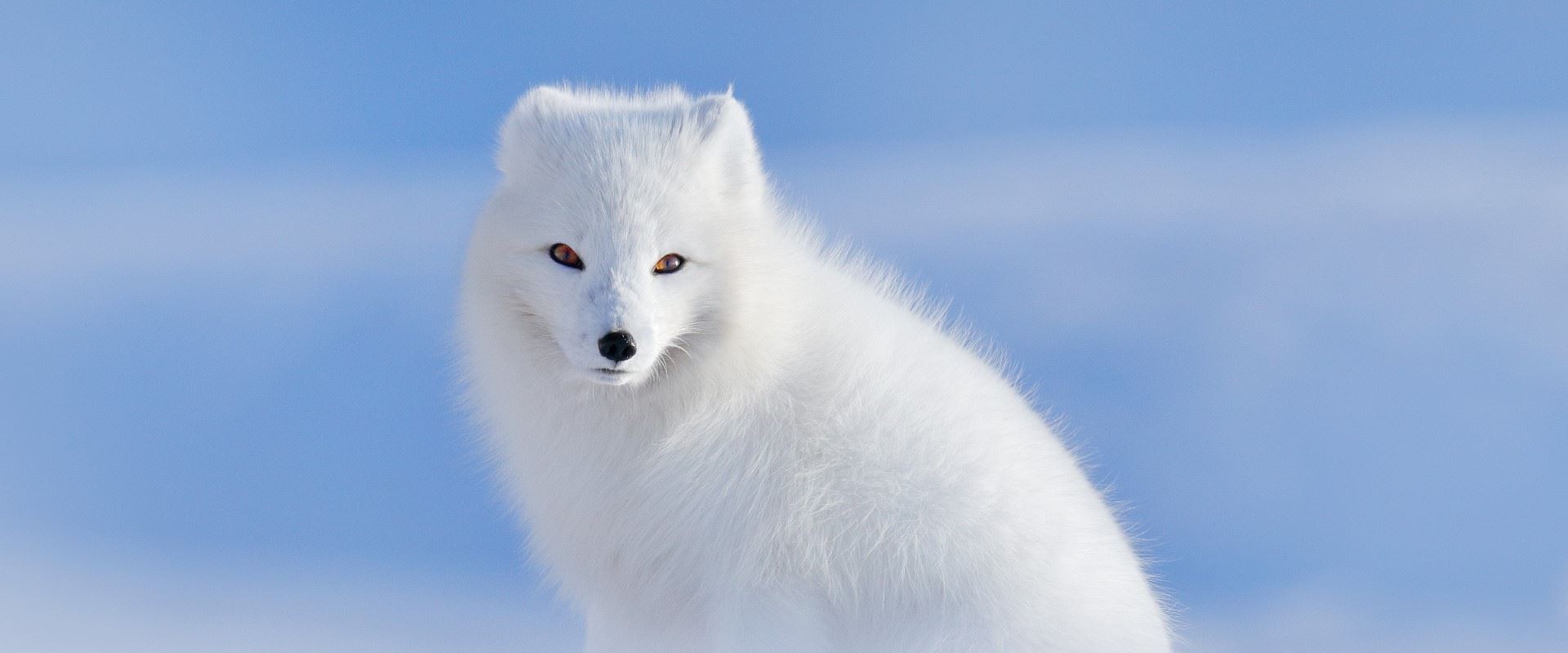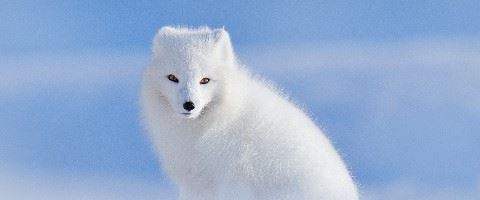Talk to our Svalbard expert

Rosanna Melaragni
Whether visiting for a short-break or combining Longyearbyen with a longer Arctic exploration, this is a destination which will capture imaginations and hearts.
We're open tomorrow at 9:15 AM 020 8758 4722 020 8758 4722
Get in touch


There are a few places on earth that even the most seasoned of travellers will have felt privileged to visit, and one of these destinations is the high Arctic archipelago of Svalbard. A joy to explore with a unique pulse and a magnetic pull.
Surrounded by the North Atlantic Ocean, just 1000km south of the North Pole, Svalbard covers an area of 62,000sq km and incorporates the islands of Spitsbergen, Bear Island, Kvitoya and Kong Karl's Island to name a few.
Despite its size the majority of the landscape is uninhibited with Longyearbyen - the capital, Barentsburg - a Russian community, Ny-Alesund - a scientific research centre, and Hornsund the only settlements. The result is a beautiful, glaciated and unspoiled environment which is unrivalled anywhere else on earth.
Svalbard appeals to adventurous travellers who wish to experience and admire this pristine Arctic landscape and to observe the mammals which call the archipelago their home. This is arguably the best place in the world to see polar bears.
The focus point for visitors is Longyearbyen, a community of 2000 inhabitants situated on the shores of the Isfjord. It is the northernmost year-round settlement in the world and those who live in town are from drawn to the Arctic from far and wide - Norway, Australia, Argentina, Thailand, Portugal and Switzerland - each answering their own ‘polar’ call.
The untamed wild is all around Longyearbyen and the magnificence and scale of the scene is guaranteed to capture the heart of all explorers.
For many, the highlight of any summer vacation to Svalbard is a longer cruise around the archipelago. With seven national parks, six nature reserves, 15 bird sanctuaries, one geotopic protected area and only 46km of road, these expeditions permit visitors to observe ice-capped and coastal regions only inhabited by wildlife - polar bears, walruses, seals, whales (beluga, minke, orca), Svalbard reindeer, Arctic foxes and a wealth of migratory bird species - northern fulmar, puffins, kiliwakes and Arctic skua.
Whether visiting for a short-break or combining Longyearbyen with a longer Arctic exploration, this is a destination which will capture imaginations and hearts. We feel truly blessed to have visited Svalbard and we cannot wait to share our passion and knowledge with future guests.
Who does Svalbard belong to?
Svalbard is a Norwegian archipelago in the Arctic Ocean.
Are Spitsbergen, Svalbard and Longyearbyen the same place?
The town of Longyearbyen is situated on the island of Spitsbergen which is the largest island in the Svalbard archipelago.
Where can I stay in the Svalbard Archipelago?
Sunvil are able to assist with stays in the town of Longyearbyen and Cape Linné, on the island of Spitsbergen, where we feature one property - Isfjord Radio Adventure Hotel, 90km away from Longyearbyen. Sunvil can also organise expedition cruises of varying durations.
How far is mainland Norway from Svalbard?
Svalbard is a 90-minute flight from Tromso and a 3-hour flight from Oslo.
How do I reach Svalbard from the UK?
To reach Svalbard from the UK you will need to fly via Oslo and/or Tromso and connect from either city to Longyearbyen. There are no direct flights to Svalbard from the UK. Scandinavian Airlines and Norwegian Air operate flights from Oslo and Tromso to Longyearbyen. Flight schedules from the UK can change from one year to the next and sometimes an overnight stay in Tromso or Oslo is required, before or after your stay on Svalbard. A Sunvil destination specialist will be able to assist with flight schedules for your preferred dates of travel at time of enquiry.
Do I need a Visa to visit Svalbard?
British citizens do not currently need a visa to visit Svalbard. Svalbard is not part of the Schengen area, so foreigners do not need a visa, work permit, or residence permit to stay there. However, if you need a visa to enter mainland Norway or the Schengen area, you will need a visa to travel through Norway or the Schengen area to get to Svalbard. You should make sure your visa allows you to enter and exit twice so you can return to the Schengen area after your stay in Svalbard.
Do I need to clear customs when travelling to/from Svalbard?
All travellers must clear customs and immigration when travelling between Svalbard and mainland Norway. Although belonging to Norway, Svalbard is considered a separate customs territory and you will need to go through passport control and custom procedures (to declare any goods) on mainland Norway. With same day connections from/to the UK, you will need to clear passport control and immigration in Oslo and/or Tromso before and after visiting Svalbard. Some flights between Oslo and Svalbard stop in Tromso and when this happens all passengers will need to disembark the aircraft and go through passport control and customs, collect their luggage and re-check this back in before continuing through security and re-boarding the aircraft with those passengers who are joining the flight in Tromso.
Where is Longyearbyen located?
Longyearbyen is located at latitude 78˚ North on the island of Spitsbergen, situated in a valley on the shores of the Adventfjord.
How far from the North Pole is Longyearbyen?
Longyearbyen is 1,316km from the North Pole.
Is Longyearbyen the world’s northernmost settlement?
Longyearbyen is the world’s northernmost settlement with a permanent population of more than 1,000, however Svalbard has another settlement even further north – Ny-Ålesund, which is the world’s northernmost year-round research station, found at latitude 79˚ North.
What scenery surrounds Longyearbyen?
The town is surrounded by steep mountains and several glaciers.
How big is the town of Longyearbyen?
Several areas make up Longyearbyen and include the town centre and Nybyen (New Town). Nybyen is located 2km south of the town and is where you will find miners barracks, guest houses, a gallery, a restaurant and the Hiorthfjellet mountain. The majority of shops, restaurants, pubs and hotels are located in the town centre. Longyearbyen has approximately 40km of roads and around 2,400 residents from almost 53 different countries.
Can I venture outside of Longyearbyen on my own?
You should not venture outside Longyearbyen, nor any other settlement in Svalbard, without being accompanied by a professional armed guide to ensure your safety in case of a Polar bear encounter. You will see Polar bear warning signs around the town limits in Longyearbyen and further information concerning the boundary can be obtained from the tourist office.
How far is Longyearbyen airport from the town centre?
The airport is located c.5km northwest of Longyearbyen.
How do you get from the airport to the accommodation in Longyearbyen?
The airport shuttle bus departs from the airport as soon as all passengers have collected their luggage and stops near to all of the hotels in Longyearbyen. Tickets (card payment) can be purchased onboard – c.75,00 NOK per adult one way. The journey time takes approximately 15 minutes. The bus back to the airport operates in-conjunction with all flight departures and it is recommended to check locally, with hotel reception, for the timetable and departure point for the bus back to the airport. A taxi service is available at the airport during opening hours and the journey time to Longyearbyen takes c.5 minutes and costs approximately NOK 150-200,00 (one way) during the day.
Is there a taxi service in Longyearbyen?
Yes and these need to be pre-booked. Hotel reception will be able to assist with pre-booking a taxi.
Does Longyearbyen have shops, bars and restaurants?
The town has various cafes, bars, restaurants and shops. Restaurant reservations are recommended, especially in popular restaurants such as Gruvelageret, Huset and award-winning Funktionærmessen, which is located within the Hotel Funken Lodge. Huset has an impressive wine cellar and is one of Norway’s best restaurants. If you would like to make any dinner reservations please enquire at time of booking. Note: Gruvelageret and Huset are located in Nybyen (New Town) – taxi transfers will be required.
There is one supermarket in Longyearbyen, Coop Svalbard, that offers a wide range of groceries, fresh produce, gifts and souvenirs, perfume, cosmetics and electronics. Longyearbyen’s only alcohol outlet is adjacent and visitors must produce their travel documents in order to make a purchase. Further information can be viewed here. A rule still in place from Svalbard’s coal mining days is a monthly alcohol quota for residents and long term visitors, which is in place to regulate the amount of alcohol that can be purchased each month due to Svalbard’s remote location and harsh climate.
Will I be able to see the Northern Lights from Longyearbyen?
The Northern Lights are a natural phenomenon and cannot be guaranteed but the season for a potential sighting in Longyearbyen is from late September to mid-March.
How do I get to Isfjord?
Access to Isfjord varies depending on season, during the winter (mid-February to April), the property is reached by snowmobile or dog sled (approx. 6 hours with stops en-route) and in the summer (May to September) arrival is by rib boat (approximately 1½ hrs), across the Isfjord.
Can I visit Ny-Ålesund whilst on Svalbard?
Ny-Ålesund is the world’s northernmost year-round research station and it is only possible to visit the area on a pre-booked excursion during summertime. There are no tourist services or accommodation except for a store and a museum. Ny-Alesund is a radio silent community (no Wi-Fi and no Bluetooth). Very strict rules apply to all visiting this area.
What wildlife can I see in Svalbard?
Although a sighting is never guaranteed, a variety of wildlife can be spotted in Svalbard including, reindeer, whales, Arctic foxes, walruses, seals, birds, fish and Polar bears.
Although Polar bear sightings are more common on the islands east of Spitsbergen, you should always be prepared for a potential encounter. Polar bears are incredibly strong and can be aggressive and may see humans as prey, therefore all visitors and locals need to be cautious. Polar bears on rare occasions have wondered into settlements, in search of food, but are soon scared away. They roam freely and can cover long distances fast and therefore it is prohibited to leave the boundary of a settlement without an armed guide (you will see Polar bear warning signs). Polar bears are an endangered species, protected by law, therefore excursions/safaris/chases are not offered nor can be arranged. A pre-booked boat excursion may enhance your chances of a potential sighting but please note this would normally be a sighting far in the distance.
What is the temperature in Svalbard?
Svalbard experiences significant temperature variations throughout the year but as a guideline, Winter (December to February) temperatures range from -15°C to -20°C (but can drop lower); Spring (March to May) temperatures are around 0°C; Summer (June to August) temperatures average around 3-7°C (sometimes slightly higher); whilst Autumn (September to November) temperatures start to drop again to around 0°C. The archipelago's unique location and polar climate means that weather in Svalbard can experience sudden changes in wind conditions and temperature.
What language do they speak in Svalbard?
The official language is Norwegian but English is widely spoken.
Can I visit the Global Seed Vault?
The Global Seed Vault is not open to visitors but organised trips, with a guide, that take you close to the entrance can be arranged. The vault is located outside of the town safe zone, in the permafrost near to Longyearbyen and is the world’s largest secure seed storage. Permafrost is any ground that remains completely frozen, 0°C, or colder for at least two years straight. Permafrost is found throughout the archipelago (except for areas beneath large glaciers) which is why this location was chosen to facilitate the Svalbard Global Seed Vault, preserving duplicates of over a million seed samples from food plants, from all over the world, in the event of a global crisis.
When is the best time to visit Svalbard?
When to visit really depends on what it is you want to experience during your holiday:
- May to September is known as Polar Summer and this is the time to visit for the Midnight Sun (April to August), wildlife, flora, boat trips, kayaking and many other activities. As the end of August approaches Summer turns into a mini Autumn and the days start to get darker again and migratory birds prepare for their long journey south.
- October to February is Winter and this is the time to visit to try and get a sighting of the Northern Lights and for winter activities. Days are darker during these months, with the darkest period being from mid-November to late-January, known as the Polar Night when there is no difference between day and night. The weeks either side of the Polar Night period you can experience what is known as the Twilight period, when the sun is positioned below the horizon but its light still reaches the earth’s atmosphere, interacting with air molecules creating a scattering that causes the sky to appear blue – Svalbard’s famous Blue Hour, a popular time for photographers.
- March to mid-May is technically Spring but in Svalbard it is known as Sunny Winter as the landscape is still covered in snow and ice. This is a good time to travel for those wanting to experience some daylight as well as winter activities.
How long should I stay?
For a quick taste of Svalbard then two to three days is generally fine and will allow you to experience Longyearbyen and have time for an activity or two. Four to five days offers more flexibility to explore and experience Svalbard, allowing for longer hikes and/or excursions. Six days or longer is ample time to immerse yourself and include a multi-day expedition. Length of stay is often determined by interests/activities, flights and budget. Weather disruptions can impact activities so having a day, or a few days, extra can be beneficial in case of any delays/cancellations.
Is there a university in Svalbard?
There is a university (UNIS) in Longyearbyen, with around 300 students, offering courses in Arctic biology, geology, geophysics, Arctic safety and technology.
Do I need to take my shoes off indoors?
On entering hotels, homes and restaurants it is custom to take off your shoes. This is a tradition that dates back to the coal mining days of Longyearbyen, due to the coal dust, and is still in force today. Sunvil recommends packing a pair of slippers for indoor use during your stay in Longyearbyen. If staying at Funken Lodge, the hotel provides slippers (found in the shoe storage area opposite the hotel entrance) for hotel and restaurant guests.
What winter clothing should I pack?
Dress in layers so you can adjust your clothing to the changing temperatures. Consider packing the following:
What activities can I do on Svalbard?
There are a wide range of activities that can be done whether as a first-time experience, or as a nature enthusiast or an adventure seeker. The activities on offer will vary depending on the time of the year you are travelling but include: snowmobiling, dog sledding, ice cave exploring, Northern Lights hunting, hiking and trekking, kayaking, boat trips, birdwatching, biking, ATV safari and coal mine visits.
Can I book excursions locally or should I book them in advance?
Excursions can be booked locally if preferred but Sunvil would recommend pre-booking to avoid any disappointment in resort should your activity not be available, especially during busy months such as winter and summer.
Can I see the Midnight Sun?
The Midnight Sun can be experienced in Svalbard from around 19 April to 23 August. Due to the earth’s tilt, making the North Pole face the sun during these dates, it means that the sun is up for 24 hours a day. During this time, it is not unusual to see locals and visitors enjoying time outdoors at midnight!
How dark does Svalbard get?
From around mid-November to late January Svalbard experiences a period which is known as the Polar Night, when the sun does not rise above the horizon. This is the darkest period and a magical time to visit – the light conditions create great photo opportunities! March and September are the twilight periods where you experience the transition between the midnight sun and polar night period, with some daylight hours. For further information concerning sunrise, sunset and daylight in Longyearbyen please visit: https://www.timeanddate.com/sun/norway/longyearbyen
What currency can I use in Svalbard?
The currency in Svalbard is Norwegian Kroner (NOK) and credit card is the preferred payment method. You cannot exchange currency in Svalbard. There is no bank or ATM on Svalbard.
Is there a medical centre or a hospital on Svalbard?
There is a hospital in Longyearbyen which has a team of doctors and other healthcare proessionals, providing emergency and basic medical care to residents and visitors. The hospital is not equipped to handle complex medical conditions and patients will need to be transferred to a hospital on mainland Norway. Pregnant woman on Svalbard travel to mainland Norway to give birth and the deceased, due to the permafrost conditions of Svalbard, are taken to the mainland for burial.
GMT +1 hours
Norwegian krone
Norwegian
13 hours 20 minutes ( via Oslo)
Average rainfall

Whether visiting for a short-break or combining Longyearbyen with a longer Arctic exploration, this is a destination which will capture imaginations and hearts.
Call one of our experts to discuss your next holiday with Sunvil on
We're open tomorrow at 9:15 AM